Dichloromethylsilane
Synonym(s):Methyldichlorosilane
- CAS NO.:75-54-7
- Empirical Formula: CH4Cl2Si
- Molecular Weight: 115.03
- MDL number: MFCD00000494
- EINECS: 200-877-1
- SAFETY DATA SHEET (SDS)
- Update Date: 2025-01-27 09:38:02

What is Dichloromethylsilane?
Description
Methyl dichlorosilane, is a colorless liquid with a sharp irritating odor. It is a dangerous fire risk, corrosive, and water reactive. The flammable range is wide, from 6% on the lower end to 55% on the upper end. Boiling point is 107°F (41°C), flash point is 15°F (?9°C), and ignition temperature is more than 600°F (315°C). Specific gravity is 1.11, which is heavier than water. Vapors are heavier than air and will travel to ignition sources. It is immiscible in water and decomposes on contact to release hydrogen chloride gas. Methyl dichlorosilane is toxic by inhalation and skin absorption; it is irritating to the skin, eyes, and respiratory system. Contact with the material may cause burns to the eyes and skin. The four-digit UN identification number is 1242. The NFPA 704 designation is health 3, flammability 3, and reactivity 2. The white space at the bottom of the diamond has a W with a slash through it, indicating water reactivity. The primary use is in the manufacture of siloxanes, which are straight-chained compounds similar to paraffin hydrocarbons.
Chemical properties
Methyl dichlorosilane is a clear, straw-colored liquid.
The Uses of Dichloromethylsilane
Dichloromethylsilane is a monomer ('building block') in the production of silicone polymers. An intermediate (starting material) in the production of other organic and inorganic chemicals. In the electronics industry for the production of ultra-pure polysilicon and in the manufacture of semiconductors and photovoltaics.
What are the applications of Application
Provides better diastereoselective reductive aldol reactionbetween an aldehyde and an acrylate ester than othersilanes. Forms high-boiling polymeric by-products uponaqueous work-up.
General Description
A colorless fuming liquid with a pungent odor. Flash point: -26°F; Boiling point: 41°C (106°F) . Vapors heavier than air. Vapor and liquid may cause burns. Denser than water and decomposed by water to form hydrochloric acid, a corrosive material.
Reactivity Profile
Chlorosilanes, such as Dichloromethylsilane, are compounds in which silicon is bonded to from one to four chlorine atoms with other bonds to hydrogen and/or alkyl groups. Chlorosilanes react with water, moist air, or steam to produce heat and toxic, corrosive fumes of hydrogen chloride. They may also produce flammable gaseous H2. They can serve as chlorination agents. Chlorosilanes react vigorously with both organic and inorganic acids and with bases to generate toxic or flammable gases. Impact of dichlorosilane causes mixtures to burst into flame. This is the case, when the dichlorosilane and most likely related substances are mixed with oxidants such as potassium permanganate, lead oxide, copper oxide, or silver oxide, even under inert gas atmosphere [Bretherick, 1995, pg. 193]. With Dichloromethylsilane, toxic hydrogen chloride and phosgene gases may be formed when burned.
Hazard
Flammable, dangerous fire risk. Very toxic.
Health Hazard
Inhalation causes irritation of respiratory tract; heavy exposure can cause pulmonary edema. Contact of liquid with skin or eyes causes severe burns. Ingestion causes burns of mouth and stomach.
Chemical Reactivity
Reactivity with Water Reacts violently to form hydrogen chloride (hydrochloric acid); Reactivity with Common Materials: Reacts with surface moisture to evolve hydrogen chloride, which is corrosive to common metals; Stability During Transport: Stable; Neutralizing Agents for Acids and Caustics: Flood with water, rinse with sodium bicarbonate or lime solution; Polymerization: Not pertinent; Inhibitor of Polymerization: Not pertinent.
Safety Profile
Moderately toxic by inhalation. Corrosive. A severe irritant to skin, eyes, and mucous membranes. Ignites spontaneously in air. A very dangerous fire hazard when exposed to heat or flame. Forms impact-sensitive explosive mixtures with potassium permanganate, lead(Ⅱ) oxide, lead(Ⅳ) oxide, copper oxide, silver oxide. To fight fire, use water, foam, CO2, mist. When heated to decomposition it emits toxic fumes of Cl-. See also CHLOROSILANE.
Potential Exposure
This material is used to make siloxanes and other silicone polymer (polysiloxane) materials. Incompatibilities: May form explosive mixture with air. Reacts violently with water producing heat, corrosive hydrochloric acid and flammable hydrogen. Methyl dichlorosilane may spontaneously ignite on contact with air (even under inert gas) and on contact with potassium permanganate, lead(II) oxide; copper oxide; silver oxide. Violent reaction with oxidizers. Decomposes on contact with hot surfaces or flames producing toxic and corrosive fumes including silicon oxides, hydrogen chloride, and phosgene. Decomposes on contact with alkaline compounds producing highly flammable hydrogen gas. Corrodes many metals in presence of water. Attacks some plastics, rubber and coatings.
First aid
If this chemical gets into the eyes, remove anycontact lenses at once and irrigate immediately for at least15 min, occasionally lifing upper and lower lids. Seek med-facility. When this chemical has been swallowed, get medi-cal attention. Give large quantities of water and inducevomiting. Do not make an unconscious person vomit.Medical observation is recommended for 24- -48 h afterbreathing overexposure, as pulmonaryedema may bedelayed. As first aid for pulmonary edema, a doctor orauthorized paramedic may consider administering a cortico-steroid spray.
Storage
(1) Color Code—Red: Flammability Hazard: Storein a flammable liquid storage area or approved cabinet awayfrom ignition sources and corrosive and reactive materials.(2) Color Code—Blue: Health Hazard/Poison: Store in asecure poison location. (3) Color Code—White: Corrosive orContact Hazard; Store separately in a corrosion-resistantlocation. Prior to working with this chemical you should betrained on its proper handling and storage. Before enteringconfined space where this chemical may be present, check tomake sure that an explosive concentration does not exist.Methyl dichlorosilane must be stored to avoid contact withwater, since violent reactions occur once hydrogen chlorideis produced. Store in tightly closed containers in a cool, wellventilated area away from heat. Sources of ignition, such assmoking and open flames, are prohibited where methyldichlorosilane is handled, used, or stored. Metal containersinvolving the transfer of 5 gallons or more of methyl dichlorosilane should be grounded and bonded. Drums must beequipped with self-closing valves, pressure vacuum bungs,and flame arresters. Use only nonsparking tools and equipment, especially when opening and closing containers ofmethyl dichlorosilane. Wherever methyl dichlorosilane isused, handled, manufactured, or stored, use explosion-proofelectrical equipment and fittings.
Shipping
UN1242 Methyldichlorosilane Hazard Class: 4.3; Labels: 4.3-Dangerous when wet material; 8-Corrosive material, 3-Flammable liquid.
Purification Methods
Impurities are generally other chloromethyl silanes. Distil it through a conventional Stedman column (p 11) of 20 theoretical plates or more. It should be protected from H2O by storing over P2O5. [Stck & Somieski Chem Ber 52 695 1919, Sauer J Am Chem Soc 68 962 1946, Beilstein 4 IV 4096.]
Incompatibilities
Forms explosive mixture with air. Reactsviolently with water producing corrosive hydrochloric acid.Methyl dichlorosilane may spontaneously ignite on contactwith air (even under inert gas) and on contact with potassium permanganate, lead(II) oxide, copper oxide, silveroxide. Violent reaction with oxidizers. Decomposes on contact with hot surfaces or flames producing toxic and corrosive fumes including silicon oxides, hydrogen chloride, andphosgene. Decomposes on contact with alkaline compoundsproducing highly flammable hydrogen gas. Corrodes manymetals in presence of water. Attacks some plastics, rubber,and coatings.
Waste Disposal
See “Spill Handling.”
Properties of Dichloromethylsilane
| Melting point: | -93 °C |
| Boiling point: | 41 °C(lit.) |
| Density | 1.105 g/mL at 25 °C(lit.) |
| vapor density | 4 (vs air) |
| vapor pressure | 6.79 psi ( 20 °C) |
| refractive index | n |
| Flash point: | −26 °F |
| storage temp. | 2-8°C |
| solubility | DECOMPOSES |
| form | Liquid |
| color | Colorless |
| Specific Gravity | 1.11 |
| Odor | Acrid; sharp, hydrochloric acid-like. |
| explosive limit | >55% |
| Water Solubility | DECOMPOSES |
| Sensitive | Air & Moisture Sensitive |
| Hydrolytic Sensitivity | 8: reacts rapidly with moisture, water, protic solvents |
| BRN | 1071194 |
| CAS DataBase Reference | 75-54-7(CAS DataBase Reference) |
| NIST Chemistry Reference | Silane, dichloromethyl-(75-54-7) |
| EPA Substance Registry System | Methyldichlorosilane (75-54-7) |
Safety information for Dichloromethylsilane
| Signal word | Danger |
| Pictogram(s) |
 Flame Flammables GHS02  Corrosion Corrosives GHS05  Skull and Crossbones Acute Toxicity GHS06 |
| GHS Hazard Statements |
H225:Flammable liquids H261:Substances And Mixtures Which, In Contact With Water,Emit Flammable Gases H314:Skin corrosion/irritation |
| Precautionary Statement Codes |
P210:Keep away from heat/sparks/open flames/hot surfaces. — No smoking. P280:Wear protective gloves/protective clothing/eye protection/face protection. P231+P232:Handle under inert gas. Protect from moisture. P303+P361+P353:IF ON SKIN (or hair): Remove/Take off Immediately all contaminated clothing. Rinse SKIN with water/shower. P305+P351+P338:IF IN EYES: Rinse cautiously with water for several minutes. Remove contact lenses, if present and easy to do. Continuerinsing. |
Computed Descriptors for Dichloromethylsilane
| InChIKey | NWKBSEBOBPHMKL-UHFFFAOYSA-N |
New Products
Indole Methyl Resin tert-butyl 9-methoxy-3-azaspiro[5.5]undecane-3-carboxylate Boc-His(Boc)-OH 2-CTC Resin 4-Chloro-7-tosy1-7Hpyrrolo[2,3-d]pyrimidine 5,7-Dibromo-1H-indole 2,5-dichloro-N-hydroxy-4,6-dimethylpyridine-3-carboximidamide 2,2-Dimethoxy-7-azaspiro[3.5]nonane hydrochloride 4-chloromethyl-5-methyl-1,3-dioxol-2-one (DMDO-Cl) R-2-BENZYLOXY PROPIONIC ACID 1,1’-CARBONYLDIIMIDAZOLE 1,1’-CARBONYLDI (1,2-4 TRIAZOLE) N-METHYL INDAZOLE-3-CARBOXYLIC ACID 4-((2-hydroxyethyl)thio)benzoic acid 1-(TERT-BUTOXYCARBONYL)-2-PYRROLIDINONE Methyl 6-methylnicotinate 3-Pyridineacrylic acid tert-Butyl carbazate TETRAHYDRO-2H-PYRAN-3-OL 2-((4-morpholinophenylamino) (methylthio) methylene) malononitrile 3-(4-morpholinophenylamino)-5-amino-1H-pyrazole-4-carbonitrile 2,4-dihydroxybenzaldehyde 1,3-Diethyl-1,3-Diphenylurea Methyl 2-methylquinoline-6-carboxylateRelated products of tetrahydrofuran

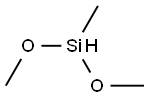


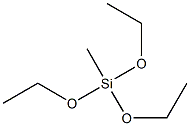
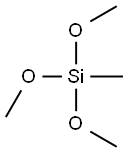
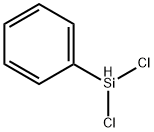
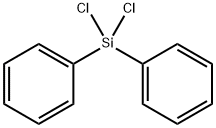
You may like
-
 Dichloromethylsilane CAS 75-54-7View Details
Dichloromethylsilane CAS 75-54-7View Details
75-54-7 -
 Dichloromethylsilane CAS 75-54-7View Details
Dichloromethylsilane CAS 75-54-7View Details
75-54-7 -
 Dichloromethylsilane CAS 75-54-7View Details
Dichloromethylsilane CAS 75-54-7View Details
75-54-7 -
 Dichloromethylsilane CAS 75-54-7View Details
Dichloromethylsilane CAS 75-54-7View Details
75-54-7 -
 Pyridine 99.5% HPLC /UV SpectroscopyView Details
Pyridine 99.5% HPLC /UV SpectroscopyView Details
110-86-1 -
 Dibutyl PhthalateView Details
Dibutyl PhthalateView Details
84-74-2 -
 Imidazole Spot supply, competitive priceView Details
Imidazole Spot supply, competitive priceView Details
288-32-4 -
 Thiourea 99% ARView Details
Thiourea 99% ARView Details
62-56-6
